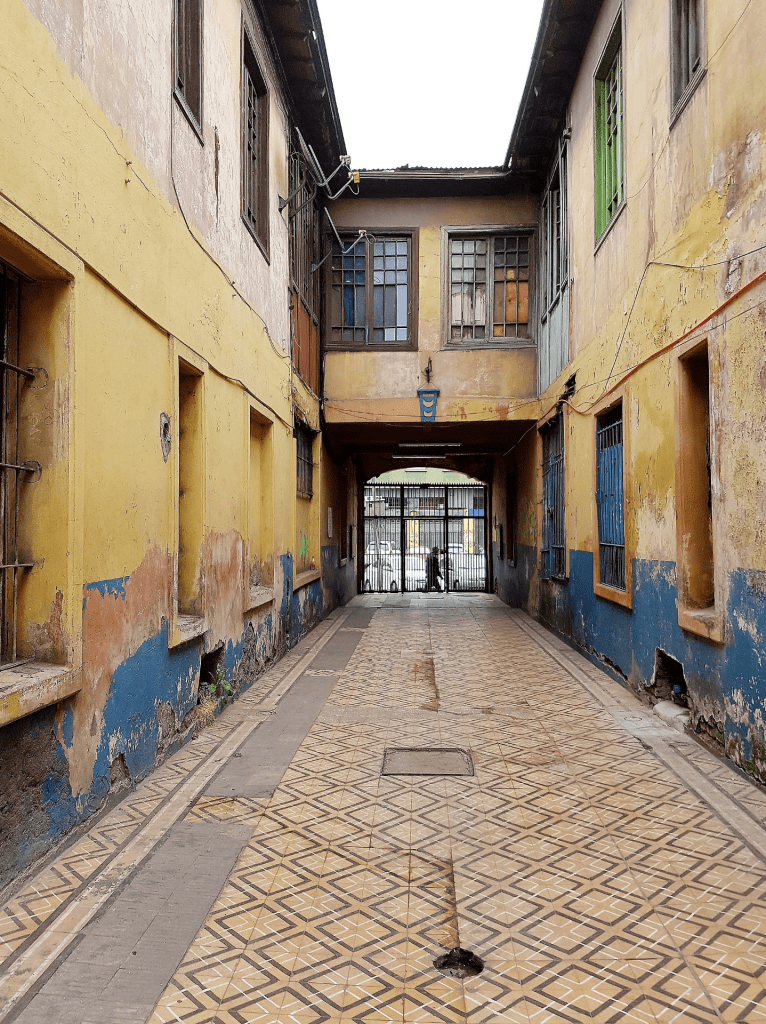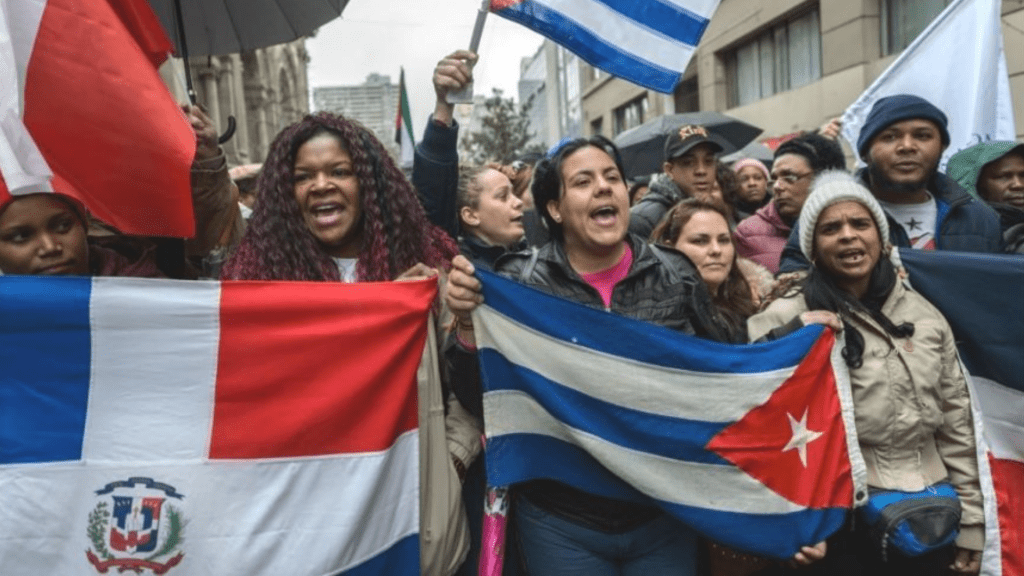By Carolina Ramírez.
During the global COVID-19 public health crisis, mass media in diverse contexts has fuelled stigmatisation and moral judgement towards particular segments of society by holding them accountable for spreading the virus. In Chile, as in other countries, the media has focused particularly on people who apparently refuse to comply with new public norms of civility, such as maintaining a safe physical distance when outdoors, staying at home and paying attention to self-care.
In such media coverage, well-known commentators, reporters and public authorities are shown monitoring and highlighting the conduct of those living in lower-income districts. Notably, the same behavior and conduct committed in more affluent areas have not received the same level of judgement. In this context, migrants, particularly those who are racialised and poor, have been especially subjected to negative stereotyping, social control and moral judgement.
An example of this is the sensationalist reporting on COVID-19 outbreaks in cités in the capital of Santiago. Cités are communal residential properties subdivided into several rooms, which are rented out to individuals and families who usually live in overcrowded conditions. The news media highlighted in particular two cités located in the municipalities of Quilicura and Estación Central, where many Haitian migrants live. Haitians are the largest migrant group racialised as black or as afrodescendientes; they are thus particularly visible in a society where blackness is seen as something new and foreign.

When news of these outbreaks began, cameras from different television channels were quickly sent to the areas to film sensationalist material for news and morning broadcasts. Media headlines emphasised that the viral outbreaks had occurred in the ‘migrant’ and ‘Haitian community’. The ubiquity of the virus became quickly racialised, with associations being made between disease, ethnicity, race and space.
In one such report, the Santiago mayor stated that ‘what has been far more complex is achieving a cultural understanding with [the Haitian migrants]. There is no ill will on anyone’s part, but there is an understanding of what hygiene is… what healthcare is, what it means to be a carrier of a virus like this. It was difficult to make them understand’ (author’s translation). His words alluded to the fact that several cité residents refused to move immediately to a sanitary residence.
A discourse has emerged in this pandemic that, although apparently well-intentioned, is discriminatory and stigmatising. It degrades and infantilises people without giving any credit to their legitimate concerns. For example, few reports highlighted that the cité residents were reluctant to move due to fears that their belongings would be stolen, that they would be evicted by landlords or, worse, deported. Instead, by explaining the virus outbreak in terms of poor hygiene and selfcare practices grounded in apparent ‘cultural differences’, the Santiago mayor suggested that some ways of being, dwelling in and inhabiting the city are inherently linked to ethnicity and migration. This is a culturalist discourse that simultaneously essentialises and racialises a particular migrant group – a form of covert racism through which migrant experiences are made visible when confronted with situations involving informality, offence, poverty, and disease.
By emphasising otherness, this discourse omits longstanding problems such as access to housing and overcrowding, two aspects closely related to the emergence of cités. It is important to note that cités are a form of residence that have existed for more than a century in the country, and a space where Chileans also live. Moreover, such a simplistic discourse conceals the fact that many migrants do not have adequate protection or guarantees to basic services and necessities, not even in this appalling public health crisis.
Housing is a particularly discriminatory and exploitative market for migrants in Chile and an issue that has become particularly visible during the pandemic. Individuals and families are evicted daily from informally rented residences. Many migrants today are stranded in camps outside their embassies, demanding humanitarian aid to return to their countries. Many of them are effectively homeless, having lost their jobs due to the pandemic and unable to pay the rent.
In Chile, 22.2% of migrants live in overcrowded conditions compared with 6.7% of the Chilean-born population. Moreover, as several reports corroborate, immigrants tend to have a higher educational and employability level than the general Chilean population. Yet, they are more likely to work in precarious and informal jobs. These jobs usually require them to circulate into public spaces. Working ‘from home’ is not possible for this type of employment, and such workers rely on daily earnings. For many people, being ‘a “good citizen” in times of a pandemic’, to use Michaela Benson’s notion, conflicts with ‘being a good family member’. This is because supporting and feeding their families necessarily implies breaking the rules of the government-mandated quarantine in Chile.

These complex circumstances, and not migration and ethnicity per se, need to be explicitly addressed as part of the problem of containing the COVID-19 outbreak in Chile; circumstances that affect both migrants and Chileans. By seeing migration as a social problem, dominant narratives blame the ‘other’ for broader structural issues – including housing and healthcare provision. Moreover, stigmatising generalisations conceal the diversity of positions and the key roles that migrants play in society.
Indeed, the migrant workforce has become particularly visible during the pandemic. Its labour includes food distribution and delivery services, agriculture, cleaning and caring for the sick and elderly. In the health sector, recent figures indicate that 17.3% of doctors in Chile are migrants, a figure that reaches 40% in primary care (in a country with a 6.6% migrant population). Making this heterogeneity visible is crucial to identifying ourselves with (and not simply against) others. Thinking in terms of similarities and differences, relationships and social networks (rather than identities only) can help us to recognise our mutual interdependencies, as well as shared commitments and rights to a dignified life.
Public discourses about migrants grounded in problematic generalisations are naive and unoriginal, but by no means innocuous. As we know, stigma and prejudice can encourage racist acts and motivate violence. They affect our social dispositions, by promoting closed attitudes towards difference. Not only can such attitudes humiliate others, they may even put their lives at risk.
The power of these discourses lies in their omissions. First, using ‘cultural difference’ to explain others’ apparent lack of civility and irresponsibility conceals the weaknesses of a discriminatory and unequal socioeconomic model. Second, by highlighting social difference and segregation, this perspective downplays the fact that migrants’ experiences of displacement and social exclusion are also shared by a significant segment of the Chilean population. Furthermore, such discourses deny the heterogeneity of positions, roles and identities of migrants in the country – a heterogeneity that, despite efforts to conceal it, has become evident in this pandemic.

